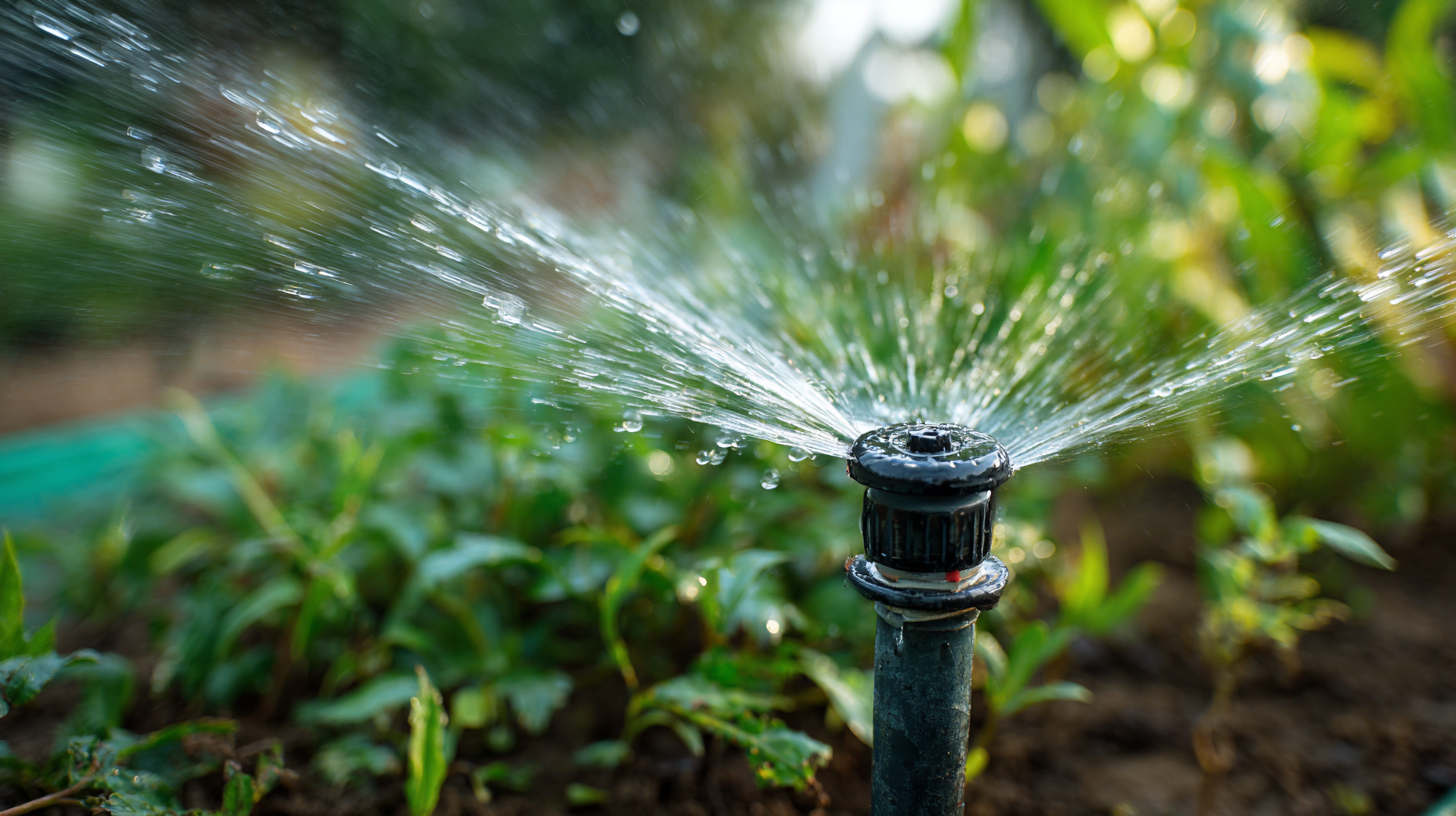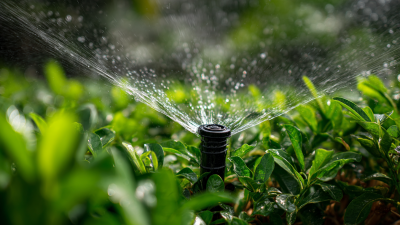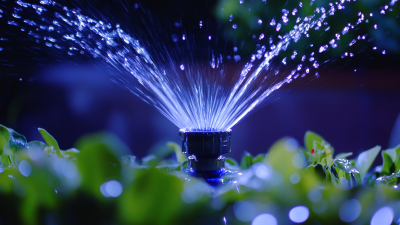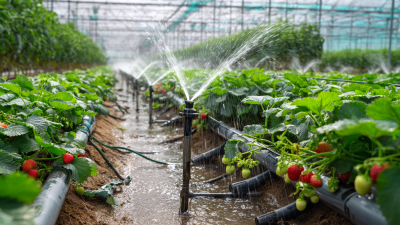Transforming your garden into a lush and vibrant oasis requires careful planning, especially when it comes to watering. One of the most essential tools in this process is a well-chosen water sprinkler system. The right water sprinkler can ensure that your plants receive adequate hydration while conserving water and reducing maintenance efforts. In this ultimate guide, we will walk you through the various types of water sprinklers available, their features, and how to select the best one to suit your garden's unique needs.

Whether you're nurturing a small flower bed or maintaining a sprawling lawn, understanding the nuances of water sprinkler systems will empower you to create a flourishing outdoor space. Join us as we explore key considerations, common misconceptions, and expert tips to help you make informed decisions for your garden transformation.
When transforming your garden, understanding its specific water needs is crucial for selecting the appropriate sprinkler system. Factors such as plant types, soil composition, and climate play significant roles in determining the right amount of water. According to the Irrigation Association, over 60% of residential water use is attributed to landscaping, making efficient irrigation essential not only for plant health but also for conservation efforts.
Additionally, the University of California suggests that watering needs can vary dramatically based on the season and geographic location. For instance, regions with arid climates may require up to 50% more water during peak summer months compared to spring. Therefore, implementing a tailored water schedule that accounts for these variations can enhance your garden’s resilience while conserving water. By investing time in understanding your garden's specific water requirements, you can select a sprinkler system that maximizes efficiency and promotes sustainable growth.
| Factor | Description | Water Requirement (inches/week) | Recommended Sprinkler Type |
|---|---|---|---|
| Soil Type | Different soils retain water differently. | 1-2 | Spray Sprinkler |
| Plant Types | Vegetables may require more water than flowers. | 2-3 | Drip Irrigation |
| Climate | Hotter climates need more frequent watering. | 3-5 | Rotary Sprinkler |
| Sun Exposure | Full sun areas need more water. | 2-4 | Oscillating Sprinkler |
| Slope | Slopes may require different watering patterns. | 2-4 | Bubbler Sprinkler |
When it comes to selecting a water sprinkler system for your garden, understanding the various types available is crucial. First on the list are stationary sprinklers, which are ideal for small areas or specific garden beds. These systems are fixed in place and can be adjusted to cover different regions, making them a cost-effective option for those with limited space. Their simplicity allows for easy setup and maintenance, making them a popular choice for beginners.
Another option is the oscillating sprinkler, which provides broader coverage by moving back and forth in a fan-like motion. This type is particularly useful for rectangular lawns or larger garden areas, as it ensures even water distribution. For more extensive landscapes, consider drip irrigation systems. These deliver water directly to the root zone, which conserves water and minimizes evaporation—a sustainable choice for eco-conscious gardeners. By evaluating the size of your garden and your watering needs, you can choose the right sprinkler system that aligns with your gardening goals and maintenance preferences.

When evaluating sprinkler system features, it is essential to consider both efficiency and coverage to ensure a healthy and thriving garden. According to a recent study by the Environmental Protection Agency (EPA), up to 50% of water used for irrigation is wasted due to inefficient systems. A well-selected sprinkler system can dramatically reduce water usage while maximizing coverage. Opt for systems equipped with smart irrigation technology, which can adjust watering schedules based on real-time weather data. This not only conserves water but also keeps your garden well-hydrated.
Tips for choosing an efficient sprinkler system include assessing the specific needs of your garden. Take note of the types of plants you have and their watering requirements. Additionally, consider installing drip irrigation for flower beds and vegetable patches, as it delivers water directly to the plant roots and minimizes evaporation loss. According to the Irrigation Association, drip systems can reduce water usage by up to 30% compared to traditional sprinklers.
Moreover, ensure your system offers adjustable spray patterns to achieve optimal coverage. Selecting a system with rotating nozzles can enhance efficiency, as these nozzles provide uniform distribution of water and reduce runoff. In fact, studies show that rotating sprinklers can use up to 30% less water than traditional spray heads, making them a smart choice for eco-conscious gardeners.
Installing a new water sprinkler system can significantly enhance your garden’s health and aesthetics, but proper installation is key to maximizing its efficiency. According to a report by the Irrigation Association, properly installed irrigation systems can reduce water use by up to 30%. This not only conserves water but also reduces utility bills, making it a worthwhile investment for any garden enthusiast.
When you begin your installation process, start by assessing your yard's layout and identifying the zones that require irrigation. It's crucial to choose the right type of sprinkler based on water pressure and coverage needs. For instance, drip irrigation systems are ideal for flower beds and vegetable patches, saving up to 50% more water compared to conventional sprinklers.
**Tips:** Ensure your sprinkler heads are properly spaced to avoid overlapping irrigation, which can lead to water wastage. Also, consider installing a timer to automate watering schedules, ensuring that plants receive consistent moisture without overwatering. Finally, check local regulations regarding watering schedules, as many regions have specific guidelines aimed at conserving water.
 Maintaining your sprinkler system is essential for ensuring your garden thrives throughout the year. Regular maintenance not only prolongs the life of your system but also optimizes water efficiency. One crucial tip is to perform a thorough inspection at the start of each season. Check for clogged nozzles and leaks, as these can lead to uneven watering and wasted resources. Additionally, ensure that your sprinkler heads are positioned properly to cover the desired areas without overspray onto driveways or sidewalks.
Maintaining your sprinkler system is essential for ensuring your garden thrives throughout the year. Regular maintenance not only prolongs the life of your system but also optimizes water efficiency. One crucial tip is to perform a thorough inspection at the start of each season. Check for clogged nozzles and leaks, as these can lead to uneven watering and wasted resources. Additionally, ensure that your sprinkler heads are positioned properly to cover the desired areas without overspray onto driveways or sidewalks.
Another important aspect of maintaining your sprinkler system is adjusting the timer and watering schedule according to seasonal needs. During cooler months, your garden requires less water, while hotter months may necessitate increased irrigation. A smart controller can help automate this process by adjusting the watering frequency based on weather patterns, conserving water while keeping your garden healthy. Regularly check and update your timers to ensure they reflect the current climate conditions.
Lastly, winterizing your sprinkler system is critical in colder regions. This involves draining the water from pipes to prevent freezing and potential damage. Be sure to shut off the main water supply and use compressed air to clear any remaining water from the system. Following these tips will keep your sprinkler system in optimal condition, enabling you to enjoy a lush, vibrant garden year-round.






